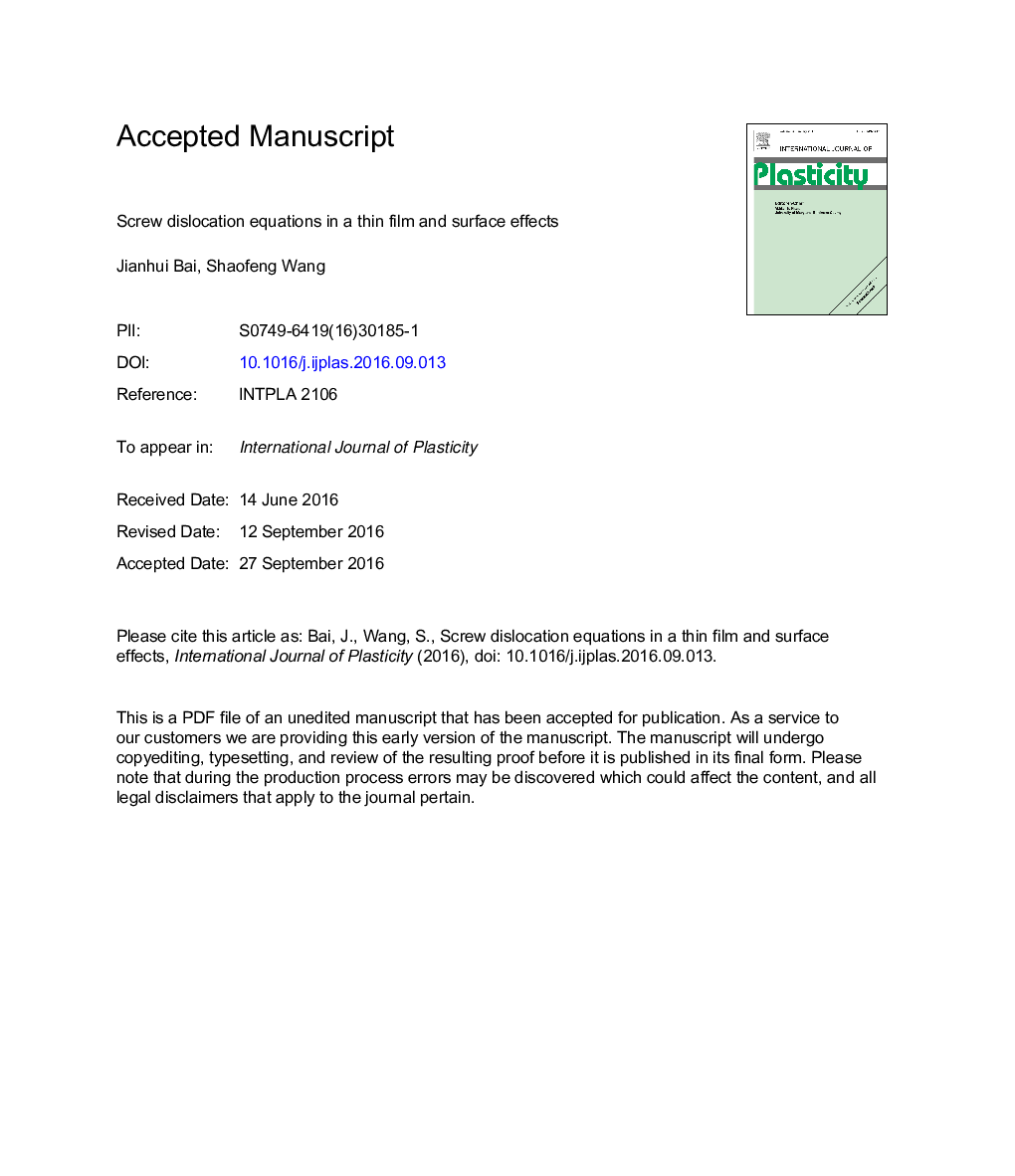| Article ID | Journal | Published Year | Pages | File Type |
|---|---|---|---|---|
| 5016811 | International Journal of Plasticity | 2016 | 45 Pages |
Abstract
The fundamental equations of screw dislocations in a thin film are derived for arbitrary boundary conditions: free surface, fixed surface and gradient loading imposed on the surface. The new equations make it possible to study the modification in dislocation structure and other surface effects. According to the modification of interaction between dislocations, boundary conditions can be essentially classified into two types: the stressed boundary (fixed stress on the surface) and the strained boundary (fixed strain on the surface). The interaction between dislocations decreases near stressed boundary and increases near strained boundary. The external stress (strain) field is separated as an independent superimposition with the modification of dislocation interaction. Surface effects on a single extended screw dislocation behavior in a thin film are investigated quantitatively. We show that the dislocation becomes narrower near a free surface, and wider near a fixed surface, where the reduction and increase of dislocation width scales proportionally to the reciprocal of distance between dislocation and surface. Correspondingly, the Peierls stress increases and decreases respectively. The image force on dislocation is attractive for the free surface and repulsive for the fixed surface. The amplitude of image force is smaller than that given in elastic theory, and the reduction is reversely proportional to the square of distance to the surface. Furthermore, the dislocation in a free standing thin film is considered and the distance between the dislocation and surface affect the amplitude of surface effect mostly.
Related Topics
Physical Sciences and Engineering
Engineering
Mechanical Engineering
Authors
Jianhui Bai, Shaofeng Wang,
